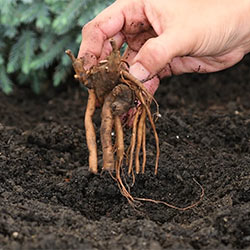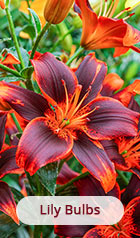Phlox are one of the most diverse perennial plants in nature, falling into one of two categories: creeping phlox or tall phlox. While both groups feature masses of small florets in a range of vibrant colors, they have a wide range of differences. Phlox is a very diverse genus, and provides two ways to add gorgeous, five-pointed flowers to the landscape.
Creeping phlox is a semi-evergreen ground cover that bursts into bloom in the spring. Creeping phlox is characterized by colorful flowers, in shades of purple, white, or pink. It's often seen in rock gardens or spilling over walls. Creeping phlox works well as ground cover, and can be beautiful in containers, too.
Tall phlox grows as conical flower heads on tall spikes made up of hundreds of florets that bloom in the summertime. Most varieties are fragrant and attract birds, bees, butterflies and other pollinators. Tall phlox is perfect for the back of perennial flower beds and in cottage gardens. You'll also find a variety of forms in the tall phlox groups, including double-blooming tall phlox and shorter, dwarf varieties.
Both creeping and tall phlox come in a variety of colors and prefer well-drained soil and sunny to partially sunny locations in the flower bed. Learn more about
how to grow and care for Phlox. Order your phlox today for springtime planting, and be sure to check out our other
sun plants for sale.
Questions about Phlox
What type of soil do phlox plants prefer?
Phlox perform best in well-draining, nutrient-rich soil that receives consistent moisture. Adding compost to the soil before planting your phlox will help these plants in a number of ways. Loam or compost can improve drainage and create a consistent moisture level-these materials tend to hold water evenly, while rocky or hard soil has dry patches and doesn't drain well. Compost also makes the soil more fertile, giving your phlox the nutrients needed to grow.
When should phlox be planted?
Ideally, phlox should be planted during the spring season, after the weather warms enough to ensure a low chance of frost. Unlike rhizomatous plants or bulbs, phlox plants have a spreading root system. They don't need a cold period to bloom, and can be damaged if they're hit with frost before they've established good roots. So, spring is the safest time to plant these perennials.
Michigan Bulb ships phlox at the right time for planting, typically near the final frost date for your zone. To find out more about your planting zone, check our
Zone Finder.
When Do Phlox Plants Bloom?
Bloom time for phlox varies by variety, but most phlox bloom in spring to late summer. Creeping phlox bloom earlier, typically in early spring, while tall phlox blooms in mid-to-late summer. Some varieties of phlox rebloom, as well, giving your landscape two flushes of color each year.
Do phlox need to be deadheaded?
In order to encourage maximum growth, it is best to remove your phlox flower blooms as you see them fade. However, be careful when deadheading, and don't eliminate the spiky foliage and stems of your phlox plants.






















